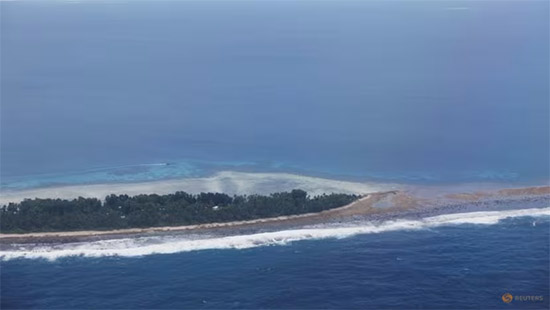
NASA climate models show 'business as usual' will flood Pacific Islands
SYDNEY, Sept 26, 2024 (BSS/AFP) - Within 30 years, sea levels will rise at least 15 centimetres on several Pacific island nations, regardless of what cuts are made to greenhouse gas emissions, new NASA analysis shows.
Under different emission scenarios, researchers projected sea level rises for Tuvalu, Kiribati, Fiji and Nauru, finding some countries could experience localised flooding a few times a year.
Others could be submerged for nearly half a year, according to the analysis released WednesdayEven under a best-case scenario -- if global warming is limited to 1.5 degrees Celsius above pre-industrial levels -- sea levels will rise 23 centimetres (nine inches) by 2054.
"Everyone (in Tuvalu) lives by the coast or along the coastline, so everyone gets heavily affected by this," said youth climate activist Grace Malie, who is from the island.
"The future of the young people of Tuvalu is already at stake," Malie added.
Under a business-as-usual scenario, Tuvalu could face sea levels rising 27 centimetres, and 30 centimetres under a worst-case scenario.
The low-lying archipelago has a mean elevation of just two metres (6.5 feet) above sea level and two of Tuvalu's nine islands have already largely disappeared.
- 'Consistent' sea level estimates -
NASA researcher Ben Hamlington said rising seas vary from region to region -- due to melting glaciers or topography of coastlines -- but Pacific projections were "surprisingly consistent".
Within the next 30 years under a business-as-usual scenario, rising sea levels across Kiribati and Fiji will reach 27 centimetres and 28 centimetres, respectively.
By 2100, sea levels could increase by 70 centimetres across the Pacific islands.
The researchers drew on flooding data and climate emission projections to determine the sea level inundation.
But Hamlington said more on-the-ground data was needed to ensure the most accurate projections, which would allow communities to best prepare for the future.
Nearly a billion people worldwide live in low-lying coastal areas, increasingly vulnerable to storm surges, coastal erosion and flooding -- while Pacific islands face growing threats to their economic viability and even existence.
Tuvalu's Prime Minister Feleti Teo said this year that rising seas and more frequent flooding have increased soil salinity, reducing crop yields and weakening trees.
Infrastructure such as roads and power lines has been washed away.
"Higher land on which to rebuild does not exist," he said.
Fiji, like other countries, has resorted to relocating entire villages from the most flood-prone areas since 2014.
But the government estimates more than 600 communities could be forced to move and 42 villages are under urgent threat of inundation.
University of New South Wales climate lecturer Ben Shaw said the issue was particularly difficult because every Pacific nation is figuring out how to deal with the issue.
"That is going to be the watershed moment," he said.